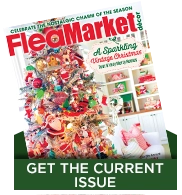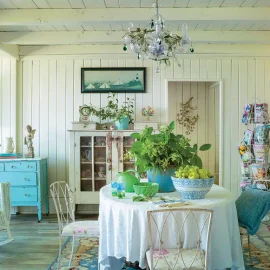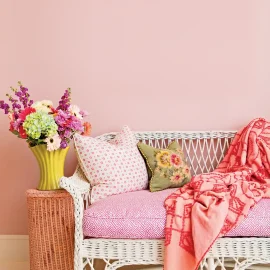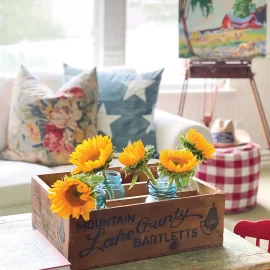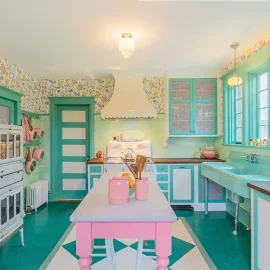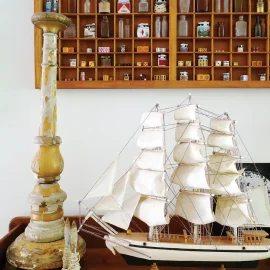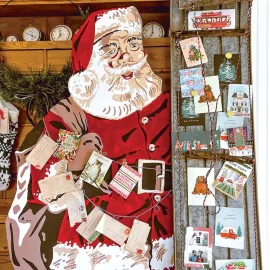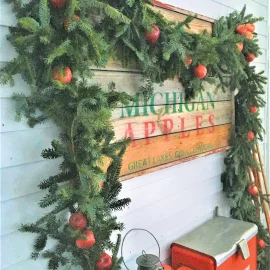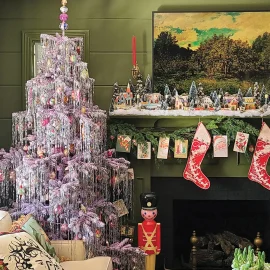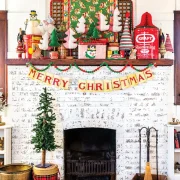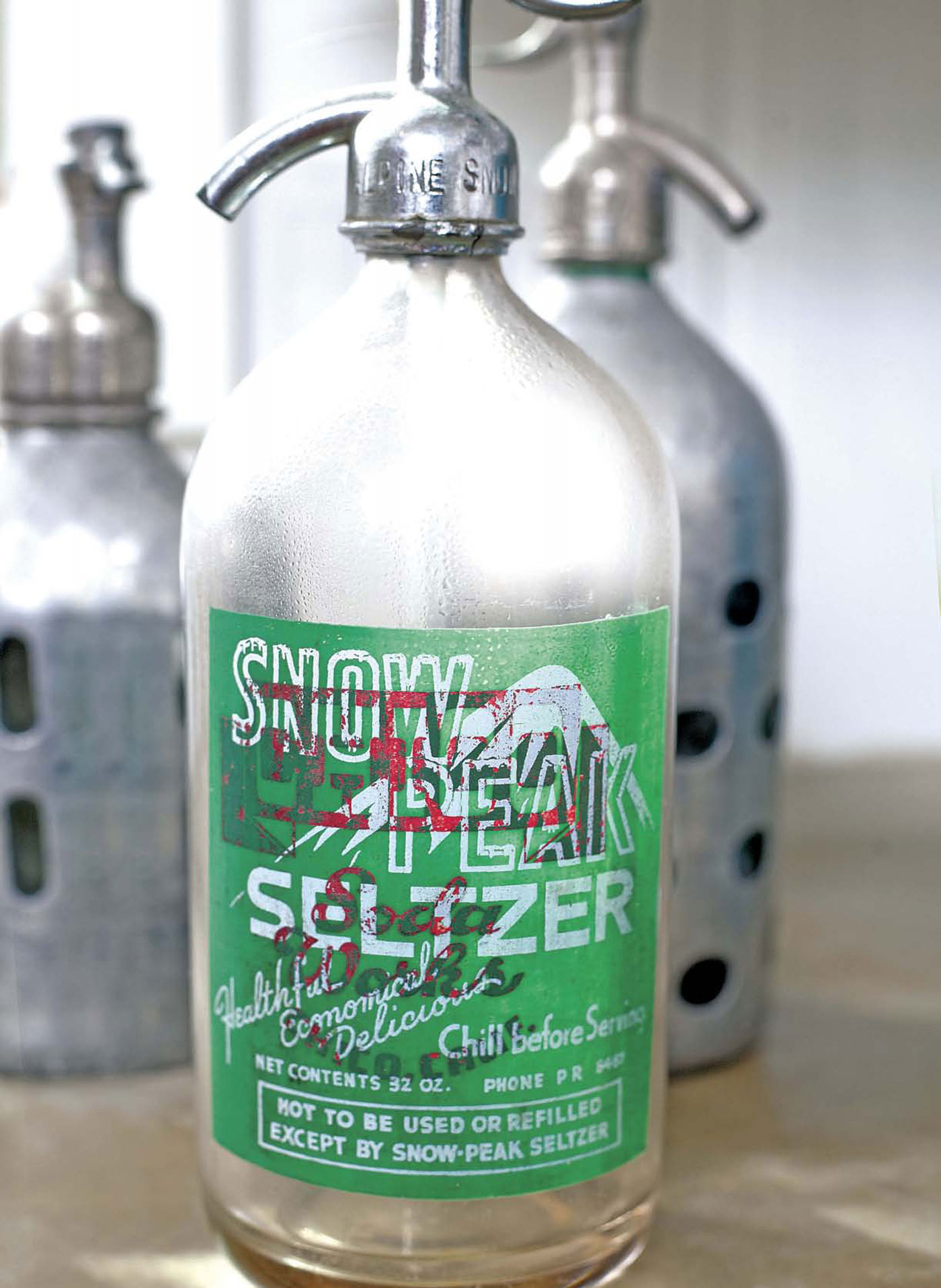
If you love a refreshing, fizzy drink and collectibles, you will love vintage seltzer bottles. Also known as soda siphon bottles, these are glass bottles with a siphon that would dispense carbonated liquid—usually water. In some cases, the bottles came pre-filled with water, but with the addition of a carbonation cartridge, the bottle could be refilled and carbonate more water. These were common in homes, soda fountains and bars beginning in the late 1800s.
At Flea Market Decor, we love to curate and share our favorite finds from across the web with you. Some of the products you’ll see on this page are affiliate links, which means that if you click through and make a purchase, FMD will earn a small commission at no extra cost to you!
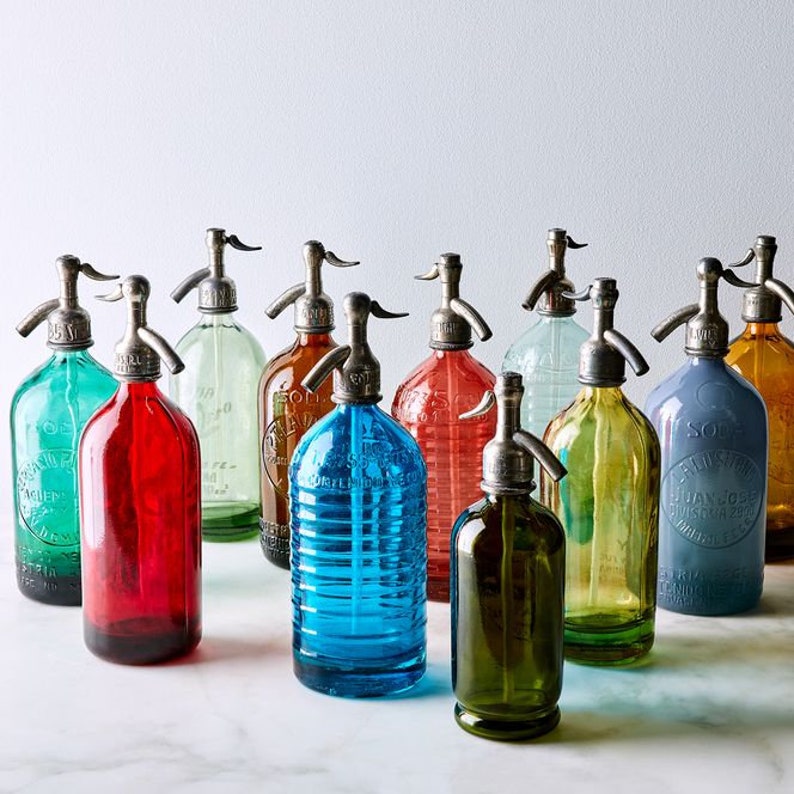
Many countries—from the former Czechoslovakia to Argentina—and companies—including well-known Sparkletts and bottling companies for Coca-Cola, Dr. Pepper and Orange Crush—produced these in a range of colors, most commonly in green, blue or brown shades; or clear and plain or clear with a stylish mesh over it.

An Effervescent History
Although seltzer and its curative effects were all the rage in Europe in the 1700s, the siphon as we know it was invented by Deleuze and Dutillet in 1829. The hollow corkscrew design allowed users to release only the amount of carbonated water they needed and left the rest of the liquid under high-enough pressure that it would not go flat.
Soda companies like Coca-Cola produced flavored syrups, which they would sell to soda fountains. At the soda fountain shop, the server would use a seltzer bottle to add carbonated water to the syrup for a fresh, fizzy concoction.
Early on in carbonation history, milk, wine and spirits were popular liquids to carbonate, either by adding carbonated water to them or by pouring the liquid directly into the seltzer bottle. A wildly popular concoction in many homes in the early 1900s was an “egg cream”—a combination of seltzer, milk and Fox’s U-Bet chocolate syrup.
The seltzer bottle’s production was concentrated in Eastern Europe. After the havoc of World War II, however, many Eastern European factories were destroyed and production declined. Bottled sodas also became increasingly popular, which contributed to the seltzer bottle’s dip in popularity. The United States, Canada and other countries such as Argentina continued to produce the bottles.
Siphon bottles are still in use today at some bars and homes of fizz enthusiasts. Today’s siphon bottles tend to be made of stainless steel, while vintage glass seltzer bottles are usually cherished for their color and connection to the past rather than their use.
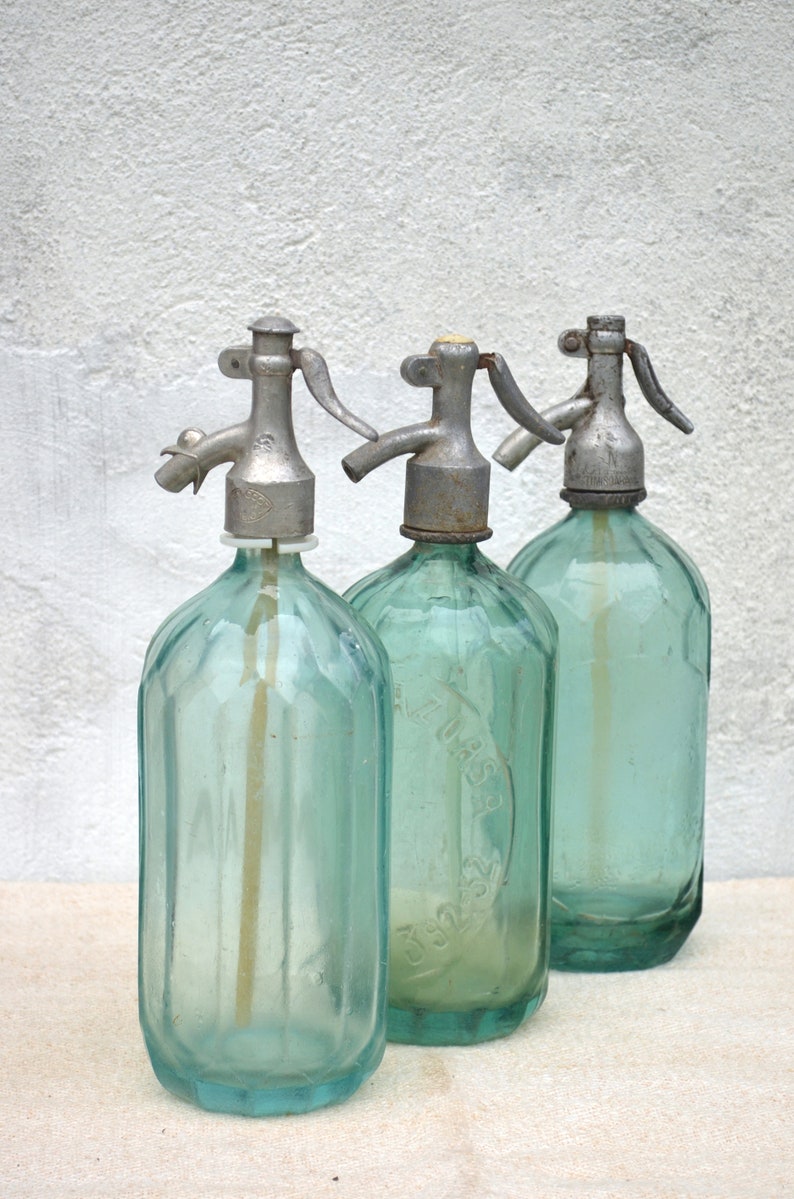
Bright Finds
Color, company, year, maker’s mark, rarity and condition will all contribute to a seltzer bottle’s value. Often the bottle’s country of origin will give you clues as to whether or not a bottle is vintage, since countries tended to produce certain colors at specific times. For example, most American-made bottles are clear, whereas most Argentina-made bottles are more commonly cobalt blue and green. Colored bottles can be harder to come by. Red and pink are especially rare colors.
The bottles come in a variety of sizes and shapes. Since the siphons were made to withstand significant pressure during the carbonation process, these bottles have endured the test of time.
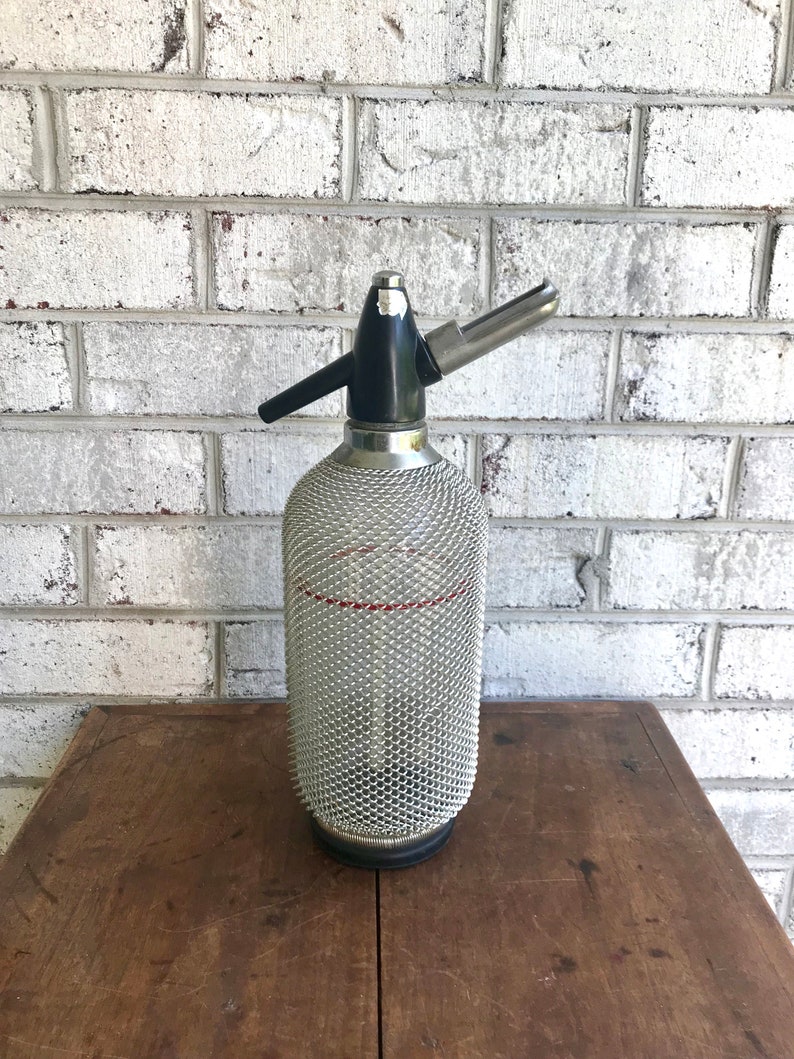
At Home with Seltzer Bottles
HOW TO DISPLAY YOUR COLLECTION
- Seltzer bottles can be great complements to a bar or bathroom. Add sea glass for a fresh display.
- Some collectors like to display the bottles on their windowsill where the light can shine through and show off the bottles’ color.
- The glass’ durability, shape and translucence also make it a great vintage light fixture.
Summary
COLLECTIBLE: Seltzer bottles/soda siphons
PRODUCERS: Owens-Illinois Glass Co. or Owens-Illinois Pacific Coast Co. in the United States. Veritable Seltzogene in France, Aerators Ltd Makers London in England.
PRICE RANGE: $10 to upwards of $300
BEST PLACES TO PICK: Antiques shows, flea markets and online retailers such as eBay and Etsy.
MARKET VALUE: Condition and rarity will determine the value.
MAKER’S MARKS: Bottles made in Czechoslovakia will be marked “Made in Czech;” “Winterschladen Middlesbrough” painted label for bottles made in Germany.

